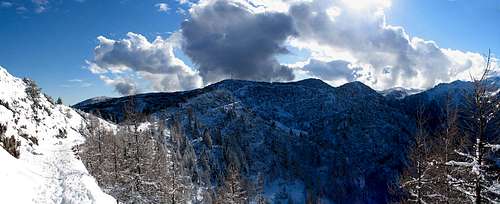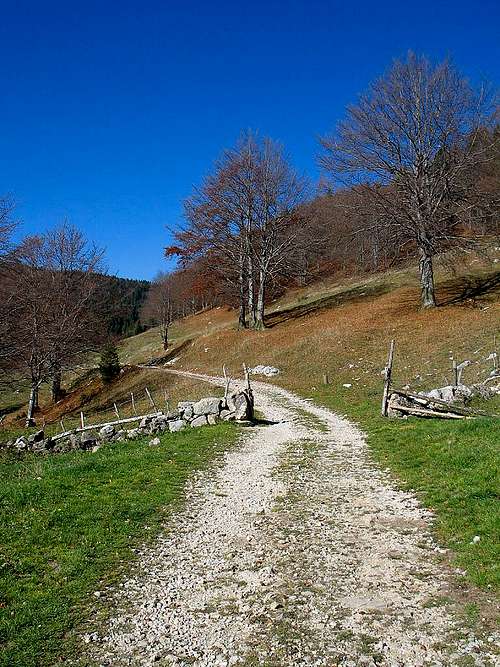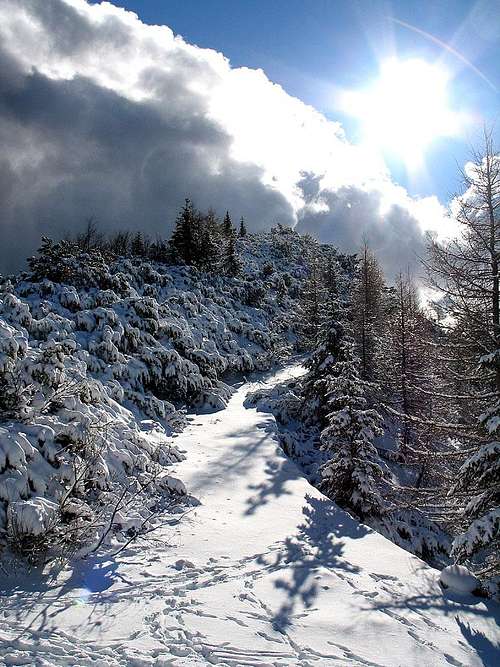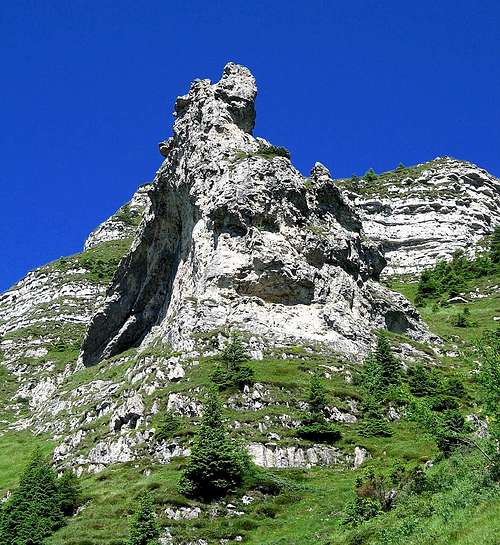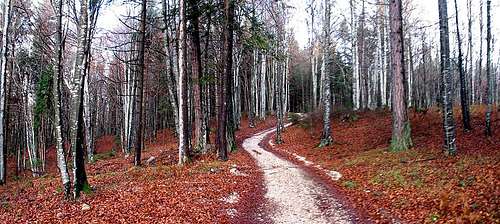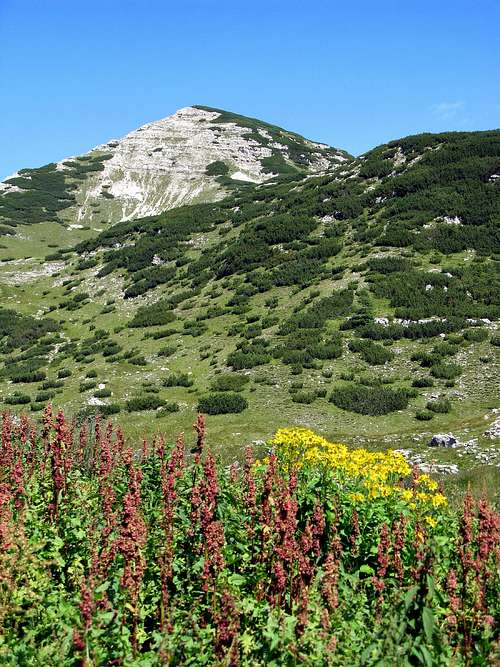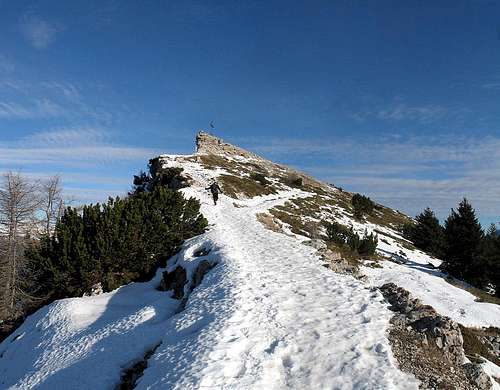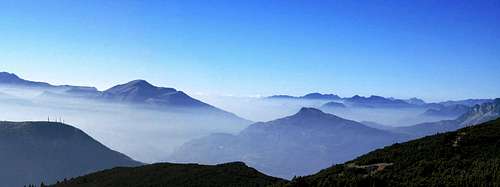|
|
Area/Range |
|---|---|
|
|
45.91500°N / 11.17600°E |
|
|
Mixed |
|
|
Spring, Summer, Fall, Winter |
|
|
7664 ft / 2336 m |
|
|
Overview
Folgaria, Lavarone and Luserna, "Trento tablelands", are in the south-eastern area of Trentino, and they are surrounded by Valsugana northwards, by Val di Terragnolo southwards, by Vallagarina - Val d'Adige westwards and by Asiago tableland and Val d'Astico (in Vicenza province) eastwards.
Folgaria, Lavarone and Luserna are three different communities which have in common historical experiences: the Cimbro-German colonization (X-XIII centuries), and Luserna is nowadays a living testimony of that since Cimbro language is still spoken; the Great War (1915-1918) fought on the Trentino-Veneto front. To testimony this tragic event there still exist many Austro-Hungarian fortifications, the so called "Emperor fortresses", such as Gschwendt-Belvedere Fort, Cima Vezzena Fort, Busa Verle Fort, Lusèrn Fort, Chele Fort, Sommo Alto Fort, Dosso delle Somme Fort, all settled along a 30 km line between Cima Vezzena and the Serrada Relieves, linked each other through ex-military roads, redoubts and trenches.
History
Folgaria has ancient origins that date back to the German-Cimbrian colonization between the 10th and the 13th century. This area always contrasted the medieval feudal power of Castel Beseno in order to protect its own privileges as a free and indipendent community. Nowadays it represents one of the most ancient and famous rural communities in Trentino.During the the First World War, long battles between the Italian and the Austrian armies took place here. As an evidence of those tragedies, in the historic area you can still find some emplacements, tunnels and, above all, the ruins of 7 forts that were connected to each other with ex-military paths, transformed into trenchs including the Forte Cherle - on the outskirts you can visit the so-called "Scala dell'Imperatore" ("The Emperor's staircase") and the ruins of the old field hospital - and the Forte Dosso del Sommo which consisted of three buildings connected to each other with a tunnel bored in the rocks and armed with 4 bronze howitzers and several machine-gun niches. Unluckily, now these forts are reduced to ruins.
Lavarone table-land, a wide area characterized by pastures and wavy meadows which had been theatre of hard bloody battles during the Fisrt World War (testified by the rests of several forts and war structures), guests Lavarone lake, one of the cleanest lakes in Italy.
The sheet of water, clearly from Karst origin, has a surface area of 54000 metres and is at 1100 metres.
Waters and surroundings give a sense of serenity: since ancient time the "father of psychoanalysis" (Freud) and that of "medicine" (Ippocrate) came here to restore themselves.
Luserna "Cimbrian island", is the last locality in the Alps where Cimbrian, the ancient German language, heir of the colonization of the Plateaux by this population in the X and XIII centuries, is still spoken.
Besides the characteristic language (which makes Luserna a living research laboratory for German and Italian linguists) the town shows also some good examples of architecture country architecture, such as the Haus vo Prükk, a specialist library and a Centre for documentation committed in collecting archives and historical local documents, and promoting events and exhibitions.
The most significant moments in Luserna history had been the German-Cimbrian colonization, the institution of the autonomous town council in 1780 (before it belonged to Lavarone administration) and the dramatic events of the Great War (1915-1918). The main evidences of this latest tragic event are the close Forte Lusérn, Millegrobbe trench warfare and Costalta cemetery.
Geology and special Interests
Today Folgaria has become one of the most renowned holiday resorts in the region.Indeed, this area is really rich in natural beauties.
For instance, you can visit the Passo Coe botanic gardens, a 30000 square metres-wide nature reserve that boasts many beautiful plants and some evident, impressive superficial karst phenomena such as two deep dolines.
The Ecchen peat-bog can be rightly considered unique of its kind: not only for its origins and structure (determined by the concomitance of glacial and karst phenomena) but also for the presence of seven different marshland vegetable combinations, divided into two groups: those that developed on morbid substratum and those that grow on inorganic base.
The geological path in Mezzomonte is situated in the middle of the Rio Cavallo valley. Here you can see the Casom glacial potholes, the Noz morainic deposits, the local rocks and the glacial potholes of the river itself.
Border and access
South: Vallagarina - Rovereto - Val di terragnolo - Serrada.West:Val d'Adige - Calliano - Dietroberseno - Folgaria.
North: Valsugana - Levico Terme - Monterovere - Passo Vezzena - Luserna.
East: Val d'Assa - Altopiano di Vezzena -Passo Vezzena - Luserna
Valdastico - Pedemonte - Lavarone
Main Summits
Bivouacs and Refuges
Bivacco Madonnina 1056m.Bivacco Vigolana 2030m.
Rifugio Casarota 1752m.
Rifugio paludei 1059m.
Rifugio Val Formica
Malga Camporosà
Rifugio Rumor 1658m.
Malga Melegnetta 1612m.
Rifugio F. Filzi 1603m.
Rifugio Stella d'Italia 1536m.


